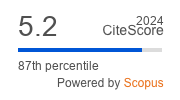Article | Open Access
On Authoritarian Political Representation in Contemporary China
| Views: | 3675 | | | Downloads: | 3119 |
Abstract: Both in the Party Charter and in the State Constitution, the Chinese Communist Party claims to represent the Chinese people. Instead of treating this claim as mere rhetoric made by the party for propaganda purposes, this article demonstrates that it indicates a rather significant transition in the party’s understanding of its relationship with the people. Particularly, roughly about two decades into the Open and Reform policy initiated under the leadership of Deng Xiaoping, the party made a strategic choice in imagining itself as the representative of the people instead of the revolutionary vanguard. This change in the language was very remarkable in the post-1949 Chinese history, in the sense that the party no longer considers itself as the facilitator of proletariat revolution, but as the authoritarian representative in the political community. If representation means “re-presentation”, as in bringing something absent present, this appears to be what the party tries to do. By embodying the nation, the party tries to represent both the rich and the poor, acting as the arbiter of forever present discords and conflicts within the society. Clearly, this representation has nothing to do with what people usually call “democratic” representation. But considering that representation and democracy are conceptually rooted in very different sources, exploring “authoritarian representation” in contemporary China would enable us to better understand both China and democratic representation.
Keywords: authoritarian politics; authority; China; Chinese Communist Party; deliberation; democracy; representation
Published:
© Demin Duan. This is an open access article distributed under the terms of the Creative Commons Attribution 4.0 license (http://creativecommons.org/licenses/by/4.0), which permits any use, distribution, and reproduction of the work without further permission provided the original author(s) and source are credited.


